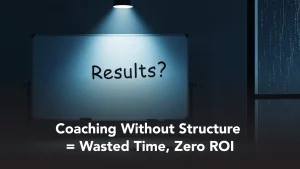Vision-setting isn’t a buzzword. It’s how you lead with intention. Growth-minded executives use vision-setting to align their actions with long-term outcomes. It’s the difference between reacting and directing.
A company without vision is like a ship without a compass; drifting from wave to wave, hoping momentum turns into direction. That rarely happens. If you lead a business, your responsibility isn’t only to respond to the day-to-day. It’s to decide where you’re going and how your team gets there. Vision-setting helps you draw that map, prioritize that destination, and mobilize others toward it.
This article breaks down how growth-minded executives approach vision-setting. You’ll learn how to create structure around your core values, set layered goals, and lead with clarity. Vision is not reserved for idealists. It’s a performance tool, and when done right, it turns leadership into forward motion.
Key Takeaways
- Vision-setting aligns leadership actions with measurable long-term business growth.
- Executives translate values into layered goals across teams and timeframes.
- Effective vision-setting demands clarity, adaptability, and relentless communication.
Key Elements of Vision-Setting for Growth-Minded Executives
Vision-setting has structure. Growth-minded executives do not just visualize a better future, they engineer it. That process relies on specific leadership behaviours and tactical building blocks.
Clarity of Purpose
Start with clarity. If your team doesn’t understand the “why”, they’ll struggle with the “how”. Clarity defines direction, reduces friction, and energizes performance.
Every objective you set should tie back to your core purpose. That doesn’t mean simplifying goals. It means refining the message until everyone knows why the work matters. A clear purpose drives focused action.
Alignment with Core Values
Growth that contradicts your values creates cultural friction. Alignment ensures that as you scale, you remain authentic. That alignment shows up in your brand, customer relationships, and internal dynamics.
A well-set vision echoes your values across every initiative. It’s visible in how you innovate, expand, and hire. People follow leaders who act with integrity. That begins with staying aligned.
Ambitious but Achievable Goals
Did you know? Businesses that commit to written goals are 42% more likely to achieve them. Goals should inspire, not intimidate. Stretch targets are useful only when people believe they can reach them with effort and focus.
Executives who lead with ambition must also provide frameworks. Clear expectations, tools, and timelines turn high expectations into real progress. Ambition succeeds when it’s structured.
Inspiration and Motivation
Vision-setting is part inspiration. People want to feel part of something important. When your vision communicates meaning, energy follows.
Motivation doesn’t have to be loud. It has to be real. Teams engage when they see a future worth working toward. Leaders fuel that with consistent encouragement and demonstrated belief.
Adaptability
Great visions are steady in direction and flexible in execution. The marketplace will shift. New tools, people, and realities will challenge your initial assumptions. That doesn’t mean changing the vision, it means adjusting the plan.
Adaptable leaders review their goals frequently. They stay responsive, not reactive. They ask better questions, listen to frontline insights, and keep strategy relevant. That agility protects momentum.
Effective Communication
A great vision doesn’t travel on its own. You need to deliver it, often, clearly, and through multiple formats. From presentations to casual conversations, your team should hear the vision repeatedly and consistently.
Your communication strategy should include visual tools, written language, and spoken messages. Repetition creates recall. Recall drives alignment. You lead through what you say, and how often you say it.
How Growth-Minded Executives Think

Growth doesn’t happen by accident. Executives focused on expansion make deliberate choices rooted in a structured vision. Their thinking revolves around core values, clear objectives, and systems that create alignment from the top down.
Starting with Core Values
Your core values shape every decision. They act as filters, ensuring that your growth doesn’t pull you away from what your company stands for. Without defined values, even profitable strategies can feel off course. You’ll notice disconnection inside your team and confusion in the marketplace.
Growth-minded leaders articulate their values early. Then they model them in practice. When values drive your hiring, culture, and internal dialogue, consistency becomes automatic. The result? Trust increases and your vision gains traction.
Setting Long-Term Goals
Without a long-term horizon, your strategy gets stuck in the weeds. Goals that look two to five years ahead give your vision shape and substance. They help you choose the right tools, partners, and strategies to move with purpose.
Smart executives define long-term goals that stretch their teams while staying grounded in business realities. They balance aspiration with clarity. Teams can then rally behind goals they believe in. Momentum starts here, not in the quarterly review.
Creating a Vision Statement
A vision statement condenses your entire strategic future into a single sentence. It’s not a tagline. It’s your north star. It should reflect your company’s deeper purpose and longer-term ambition without sounding generic.
The best vision statements are specific enough to be memorable and broad enough to allow growth. Your team should be able to repeat it. Your clients should feel it in your delivery. When that alignment happens, the statement becomes culture, not just communication.
Breaking Down Goals
Once the vision is set, you need a structure beneath it. Break down your long-term goals into annual, quarterly, and monthly objectives. This turns broad strategy into actionable performance.
You’ll also create visibility. Teams understand what progress looks like when success is measured in concrete steps. Milestones generate quick wins, which build confidence. When goals are broken down, vision becomes a habit.
Creating Vision Layers
A strong vision needs to cascade through the organization. What starts at the leadership level should break into departmental plans and individual objectives. This layered approach keeps alignment intact.
Each layer gives employees clarity on their contribution to the whole. Sales focuses on pipeline growth. Operations centers around delivery excellence. Everyone is solving different pieces of the same puzzle. That’s how vision shows up in real time.
Embedding and Communicating Core Values
Values need to be visible, not buried in a handbook. Embedding them means hiring people who reflect them, promoting people who practice them, and making decisions that reinforce them consistently.
Communication keeps values alive. Use team meetings, onboarding sessions, internal content, and leadership storytelling to reinforce what matters. Repetition drives retention. Your values should be as recognizable as your logo.
Not sure how to structure your company’s long-term vision?
Our expert facilitators at CCI help growth-minded executives define, refine, and operationalize strategic visions with confidence and clarity.
FAQ
What Is The Difference Between A Vision And A Strategy?
A vision outlines where your business wants to go long-term. Strategy details how you plan to get there. Vision comes first and sets the tone. Strategy follows and builds the path.
Vision anchors your purpose, while strategy equips you with the process. Without a vision, your strategy lacks direction. Without a strategy, your vision remains wishful thinking. The two work best in tandem, forming a complete leadership framework.
How Can I Make My Vision Statement More Actionable?
Start with clarity and specificity. Use real-world language that reflects outcomes, not just ideals. Make it visible in your goals, priorities, and messaging. Then repeat it until your team knows it by heart.
Tie your vision to actual KPIs and behavioural expectations. When teams can see how their daily work pushes the vision forward, accountability strengthens. You create action through alignment. That’s when vision becomes movement.
Is Vision-Setting A One-Time Activity?
No. Vision-setting is continuous. As your company grows, you revisit and refine the vision to stay aligned with new opportunities. Think of it as a living guide, not a fixed document.
Reviewing your vision during major business milestones keeps it current and useful. Leadership transitions, product launches, and market changes are ideal checkpoints. Stay proactive and intentional. That way, your vision evolves without losing purpose.
Final Thoughts: Vision-Setting Sets the Future for Growth-Minded Executives
Vision-setting keeps your leadership focused and your team aligned. You’ll make better decisions when your values, goals, and strategy work together. Don’t leave your future up to chance, create it. Book a strategy session and let’s define your next chapter.
Ready to embed vision-setting into your leadership strategy?
Join CCI’s executive coaching program to build a structured approach that turns ideas into outcomes and vision into velocity.





